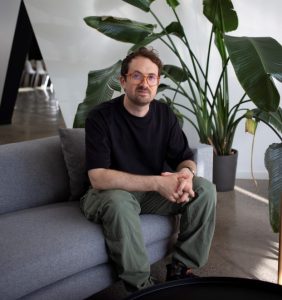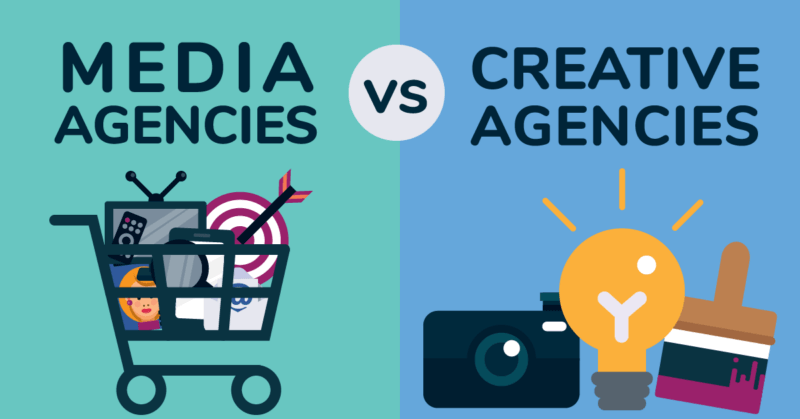Over the past thirty years, creative and media agencies have increasingly diverged, leading to industry-wide debates about effective, future-proofed business models. While unbundling originally made sense on paper, the divisions grew and the hold-cos have since had to work hard to convince clients they are truly ‘joined up.’
Regardless of such assurances, the reality is that each discipline typically operates in its own silo. Consequently, communication between agencies has become ever more challenging, even when they sit within the same group.
On one side of the canyon are the creative shops, which care about brilliant ideas and beautiful work, they measure success on coverage and case studies generated, and on award wins; on the other are the media agencies, concerned with the minutiae of performance, placement, and optimisation to make every pound spent count.
Each camp works to different timelines and operates with different values and vocabularies which impact the culture of their worlds. This disconnect isn’t just frustrating clients or creating economic asymmetries in the business models; it’s a fundamental threat to campaign success itself.
“You can largely explain the decline of advertising in a sentence,” wrote Rory Sutherland, vice chairman at Ogilvy, to much applause last year. “Media agencies know how to make money from media in the absence of creative; creative agencies don’t know how to make money from creativity in the absence of media.”
In Sutherland’s view, the imbalance is compounded by the media agency and platform owners’ prioritisation of black-box algorithmic solutions over human creativity and insight – leaving the creative part of the mix “effectively surviving on tips.”
Excessively prioritising media buying and placement means creativity gets the short straw if it’s considered cheaper to purchase ad space at scale through a platform than invest heavily in developing creative.
While this approach may provide short-term cost savings, mundane creative ultimately undermines long-term brand building and only hardens the attitudes of creatives against their media agency frenemies.
Perhaps the most obvious solution to this thorny issue, which goes hand-in-hand with the shift towards online advertising over the same thirty-year timeline, would be to revert to the traditional full-service approach of yesteryear.
And adland does now appear to be moving towards some level of reintegration, driven by advances in AI – which is being used to overcome technological silos – as well as in response to client demands for a more integrated approach. These calls have been going on for some time, but the volume of the conversation has definitely risen more recently.
However, and as many agency bosses agree, it seems unlikely we’ll witness a mass reunification as many clients still prefer closer collaboration between the different agency disciplines rather than buying into a full-service model.
I have worked in account management on both sides of the fence. I understand the challenges and frustrations for both parties. I also recognise how this schism impacts the platforms and – most importantly – clients.
One of the key contributing factors holding back best practice is a lack of collaboration, or indeed understanding, between media and creative partners. Let’s consider that 71% of senior global marketers, as surveyed by my business, said that communication between functions was poor to sub-average.
Creative intelligence
The industry stands at a crossroads, but despite ever-increasing opportunities to bridge the gaps through automation and data analytics, the industry’s response has been broadly cynical.
Adtech is still considered a dirty word – and that’s understandable. Creatives are fed up of being reminded they’re due to be replaced by generative AI, and it’s a similar narrative in media – where media plans will be auto-filled with AI-generated content courtesy of an army of bots. Alarm bells are ringing on both sides.
It doesn’t have to be this way.
Here’s a less dystopian vision: automation will transform our industry by removing tedious creative and media processes. Data analytics will be used to inform the creative process, not replace it. Couple this with more dynamic, efficient workflows and technology can give teams the freedom to test varied creative output at scale, harnessing data feedback loops to provide cross-platform, real-time insights to power the next brainstorm. Doesn’t sound so bad?
In a competitive environment, there’s a tendency to use tech jargon and knowledge gaps to exploit our individual advantages – and that’s not healthy when creative and media partners should be working towards mutual goals.
Instead, we should be actively looking for solutions that protect and preserve each team’s specialisms using data to prove the value of all parts of the process to clients – thus elevating the work and its effectiveness longer term.
One client partner put this succinctly when they suggested what adland needs is a “Switzerland” – a place where we can come together, understand what’s driving value, and bolster collaboration. As such, adtech could actually be just what advertising needs to enable a more integrated creative and media model centred around data, and regardless of whether agencies sit within the same group or are independent of one another.
As the economy picks up, and a wave of new pitches begins, agencies are seeing an increase in progressive clients looking for bespoke “joined-up” media and creative approaches to building brand salience and growth. It’s up to us now to help make this work for them – leveraging both human experience and technology to create a unified force of creative brilliance and intelligent optimisation.

 Dan Moseley is Managing Director, North America, at Automated Creative.
Dan Moseley is Managing Director, North America, at Automated Creative.




